Orchestration and Management
Why Cloud?
- Streamlined and self-service infrastructure provisioning process to increase productivity and reduce time to market
- Capacity augmentation
- Reduced supplier risk and vendor lock in with a cloud abstraction layer
- Ability to provide multi-tenant environments
- Visibility over and accountability for cloud costs
Many businesses, large and small use cloud computing today either directly (like Google, Amazon) or indirectly (like Twitter) instead of traditional on-site alternatives.
Cloud Solution
Looking at the anatomy of a Cloud solution, there is usually a front end or the service catalog. It is how the end-users or consumers of the cloud solution request for services. Service themselves are predefined by the administrators or the business entity.
There then, is an orchestration or management layer which fulfills the service request by configuring the infrastructure components which can comprise of virtual & physical entities.
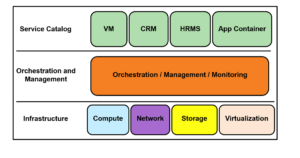
Shift to Self-Service
- Users of public, private and hybrid cloud all like having the on-demand option of deploying applications.
- This typically is modeled after most public cloud operations where the user can simply select an application from a catalog and have it deployed instantly.
- Lifecycle management, chargeback, and accounting need to be tied into this as well.
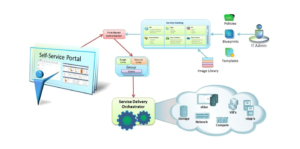
Cisco ACI with UCS Director
- Management and orchestration for storage, network, and compute resources
- Orchestration creation of application policies including L4-7 Service insertion
- Self-service portal for on demand application deployment
- Tenant resource allocation for network, compute and storage elements
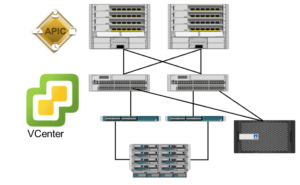
Manual Application Deployment with ACI
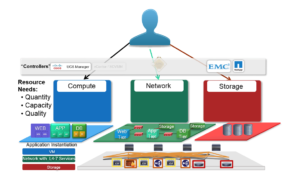
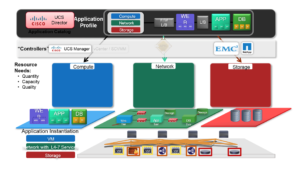
Automates the various operational tasks within the ACI Fabric
- Tenants, Private Networks, Bridge Domains, App Profiles, EPGs, etc.
- Automated through APIC REST API
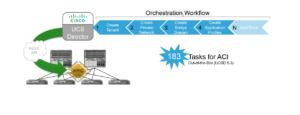
Complements the automation of ACI with the endpoint automation
- End to end workflows encompassing operational tasks across all infrastructure layers; ACI fabric, virtual servers, physical servers, storage, services, etc.
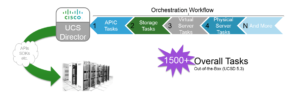
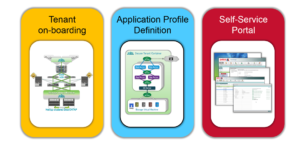
- Tenant requesting infrastructure as a Service (IaaS)
- Tenant requires gold class of service for storage, network, and compute
- UCS Director provisions infrastructure and allocates virtual and private resources to tenant
- Logical configuration is provisioned
- Policies and class of services are applied to the tenant.
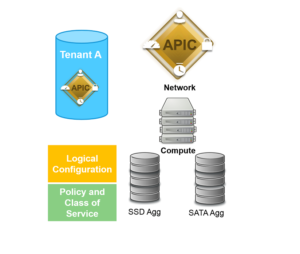
Creating an Application Profile with UCS Director:
- Define ACI Network Tiers for delivering application resources within a secure tenant container
- Define the suitable capacity and quality of UCS physical and virtual compute and NetApp storage resources for each application component
- Define the Cisco ACI network services required to deliver the appropriate service quality and security for the application

- ACI was designed to build a data center fabric with the application in mind. Polices are created based on application needs
- UCS Director allows for a single pane of glass for management of the various elements in your data center
- UCS Director also provides orchestration for end to end provisioning in a data center
- When UCS Director is used with ACI, Tenant onboarding, application deployment is available through and end user portal and orchestrated by the UCS Director
